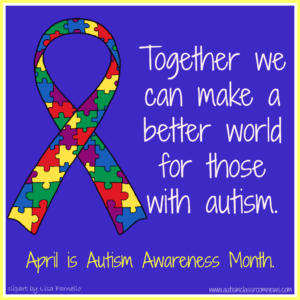By Melissa Bourchier
Autism Assessment: The diagnostic process is so complex, and usually very overwhelming. Many professionals are involved, all asking for the same information over again; and parents often feel like they are constantly highlighting the negative side of their child’s behaviour and personality. Parents often tell me that they feel like only the ‘bad’ is being paid attention to. It is so important for professionals to utilise a strengths-based focus – for us to understand that a child’s strengths (like being detail oriented, or being very sure about what they want, or being very good at using technical language about a topic they are passionate about) can be used to scaffold or support their weaknesses. It is also important that in the 10 minutes before hearing a diagnostic label and the 10 minutes after hearing a label – your child has not changed personalities. A diagnosis is only used to help communicate a pattern of strengths and weaknesses so that adults can provide support for your child. The diagnosis does not change your child; we just understand them a little better now.
Meltdowns: Parents often tell me about the anxiety, frustration, and embarrassment related to their child’s meltdowns. Not only is their child feeling overwhelmed but the parent is also feeling overwhelmed during a meltdown. Then, of course, the parent’s flooded emotions change the way they respond to their child which makes the child’s meltdown escalate – and a horrible feedback loop gets started. The fear that this will happen in public, or in front of family members who all have an opinion about how to handle things, creates even more anxiety and often leads to avoidance of leaving the house or feeling a sense of failure or frustration at the child and the parent. This can be heartbreaking to work with and helping parents to understand meltdowns is often where we start our work.
As a psychologist working with a family the goal of intervention/therapy is to understand the functions of the meltdowns – why is the meltdown happening – is the child trying to escape or avoid something, are they feeling sensorily overwhelmed, are they trying to communicate frustration through their actions or their cries instead of words? When we understand the function of the behaviour we can try to make changes to the environment, or world and people around the child, to prevent meltdowns; to respond or react to meltdowns in a more helpful manner; or to to teach the child a better way to handle their emotions or communicate. However – Therapy is a long road that requires lots of work! Stick with it. Tweaks and changes are required along the way. Your therapist is an expert in child development and behaviour; but you are the expert in your child and family. Therapy and intervention is a process of working together to help your child and family.
Understanding the Whole Picture: Children with Autism Spectrum Conditions are, indeed, all unique. No child has the same pattern of strengths or difficulties. And that makes them wonderful to work with. Discovering what makes a child and family ‘tick’ is core to psychology work as this is a way ‘in’. For me, it is important to remember that the ‘whole picture’ is not just the child but the nested support and systems within which they develop: their siblings and parents in immediate family and the family home; the extended family support systems; the childcare or education systems; the local government services; other medical services and allied health professionals. Having worked in multi-disciplinary services for many years; with Speech Pathologists, Occupational Therapists, Paediatricians, GPs and Physiotherapists, as well as Early Childhood Intervention Services (ECIS) and Amaze; I know that communication between family and all therapists is so important. It can be confusing for families to have so many clinicians involved and all providing different strategies or information. Know that your questions for clarification and for the research or evidence behind these theories are always welcome. Asking questions about the whole picture (the system and service picture; and your child’s whole strengths and weaknesses picture) and how it all fits together tells us that you are ready and engaged in making a difference. This is why puzzle pieces are so often used to depict Autism Spectrum related organisations. Because all the pieces need to fit together to make a whole functioning picture of a health and happy child and family.
Hope and perseverance: When I meet with a family during the diagnostic process I am often asked about whether their child will get married, have children, finish school or get a job. My answer is always: Who can tell you where you will be in 5 years time; or 10 years time; or 20 years time. The future is always uncertain but it is full of opportunity. Having hope for any child’s future requires perseverance in parenting effort; regardless of diagnosis. Find a therapist that you feel comfortable working with. Ask questions about why a therapy or intervention might work or might not work. Be prepared to put in effort to make change. Also, be prepared for those changes and that effort to work in 3 months because your child’s needs have changed. The constant evolving and changing nature and needs of children on the Spectrum creates both frustration and hope. At the core of the diagnostic process and the intervention process is a child and a family who love and experience and communicate in unique ways. That is why families and clinicians have hope, and persevere.

